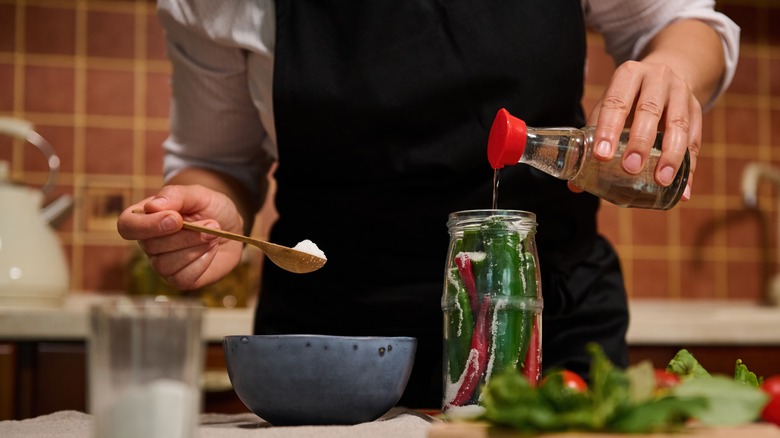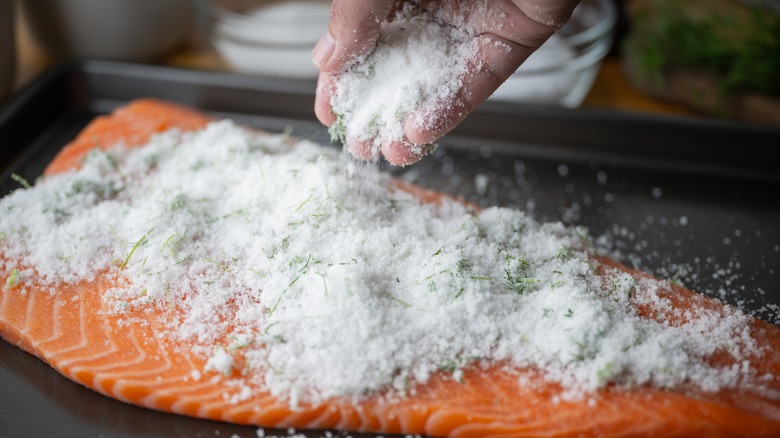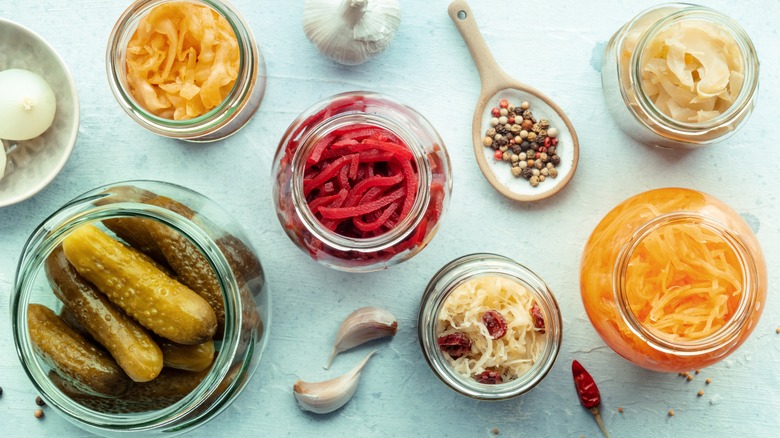Pickling And Brining Are More Intertwined Than You Think
At first glance, pickling and brining probably look like completely distinct culinary techniques. Pickling conjures images of jars filled with everlasting tangy cucumbers or fluorescent pink onions while brining seems reserved for classic meat dishes like juicy Thanksgiving turkey or tender corned beef. Interestingly, the difference between pickling and brining has little to do with whether you use meat or vegetables and everything to do with the other ingredients involved.
Despite their apparent differences, both pickling and brining are part of the same broad category — curing, which refers to any means to preserve food. Specifically, these two techniques share a core principle: using salt and/or acid to enhance flavor and preserve food. So, does this mean your expertly brined Thanksgiving turkey is technically a pickle? And is the kimchi hanging out in your fridge a result of brining? While it might seem a bit confusing, diving into their shared practices and distinct qualities should clear things up.
Brining relies on salt
Brines can take one of two forms, but they both employ the same food science. You can opt for a wet brine, mixing water with salt (and sometimes aromatics or spices), or a dry brine, where food is coated in salt (and often spices) sans water.
The highly concentrated salt used in these techniques changes the chemical structure of the proteins it comes in contact with (also known as denaturing), which tenderizes the meat and helps it stay more moist and flavorful. Although it is less often used for vegetables, brining can add layers of flavor to dense vegetables like potatoes, and a dry brine can also draw excess water out of foods like eggplant and zucchini to help them play better in recipes like lasagna or eggplant parmesan.
Marinating, a related technique, swaps salt for acid. Acidic foods like yogurt, vinegar, wine, buttermilk, and even mayonnaise can make great marinades. The science behind this technique is similar to the way salt works during brining, in that strong acids denature protein, imparting flavor, tenderness, and moisture-holding abilities to food.
Pickling can use salt, acid (or both)
Pickles are unique due to their versatility. By definition, pickles are preserved by brining with salt, marinating with acid, or a combination of both. With this in mind, while brining is a form of pickling, not everything made with a brine is a pickle. For instance, a turkey brined for tenderness and taste doesn't quite fit the pickle category because the brine isn't meant for long-term preservation.
A variety of techniques can be used to make pickles, but two stand out when it comes to the pickle versus brine discussion. The first uses acid to marinate the pickles, which quickly tenderizes vegetables while inhibiting bacteria growth — think of quick pickled onions on tacos or the pickled cucumbers and carrots you'd find atop bibimbap. The second uses a salty brine to preserve the food while promoting the growth of certain bacteria. Given some time and the right conditions, microbes can flourish and ferment, developing complex flavors, like you'd find in kimchi or sauerkraut.
As it turns out, pickling and brining aren't so different after all. And although they're not always interchangeable, both change the structure of foods, adding flavor and preserving them. Whether it's through a quick vinegar dip or a slow fermentation soak, pickling showcases the ingenious (and tasty) methods that can be used to make food last.


